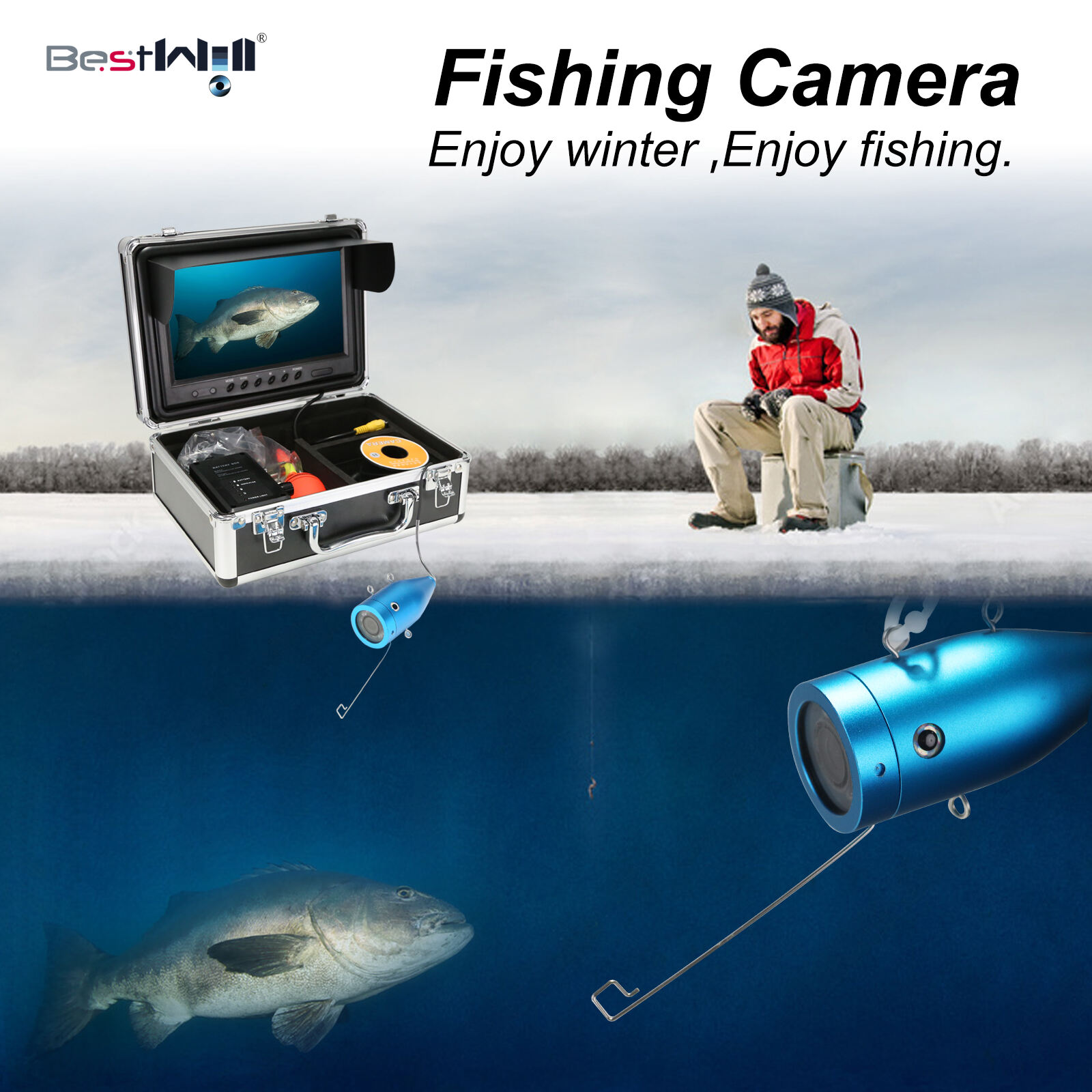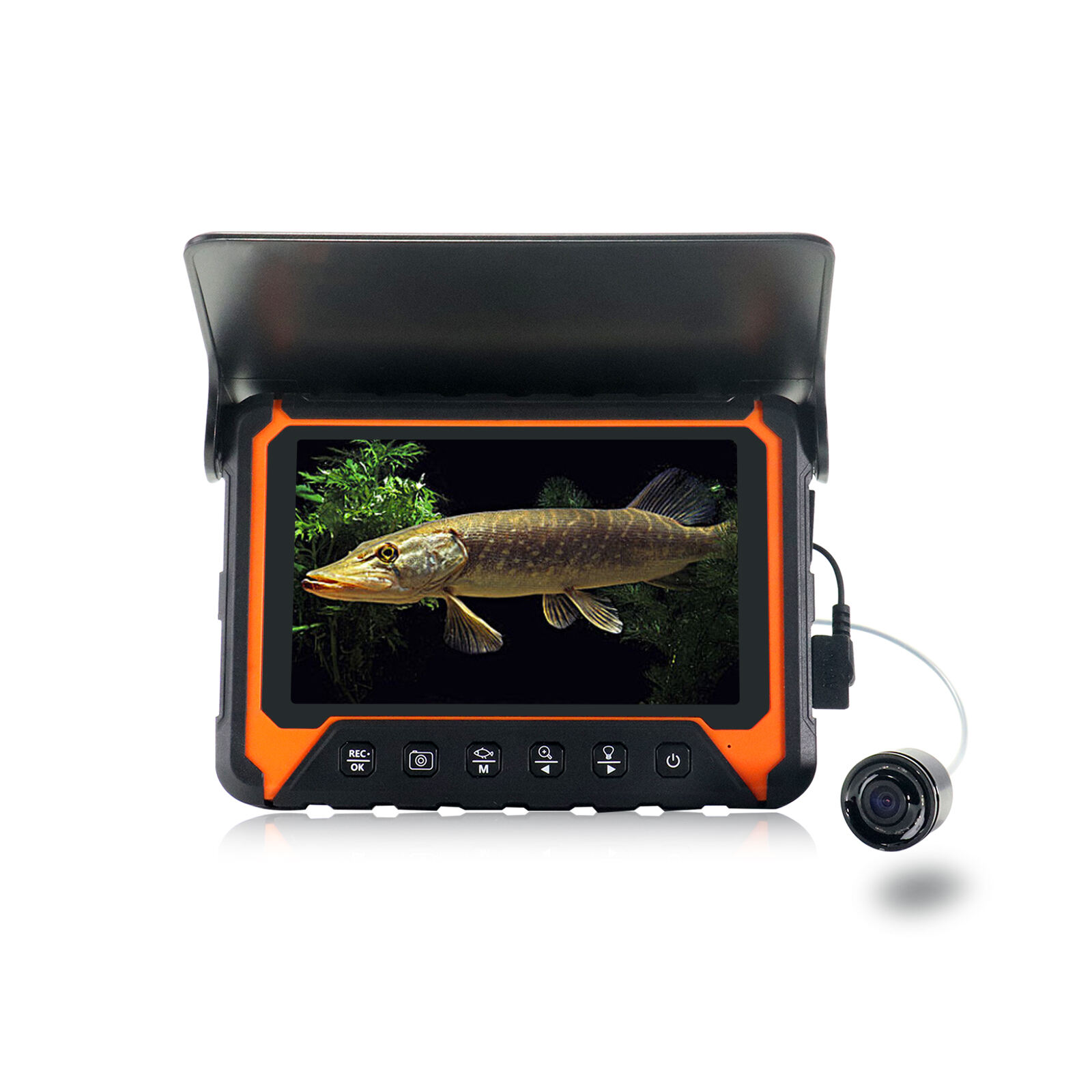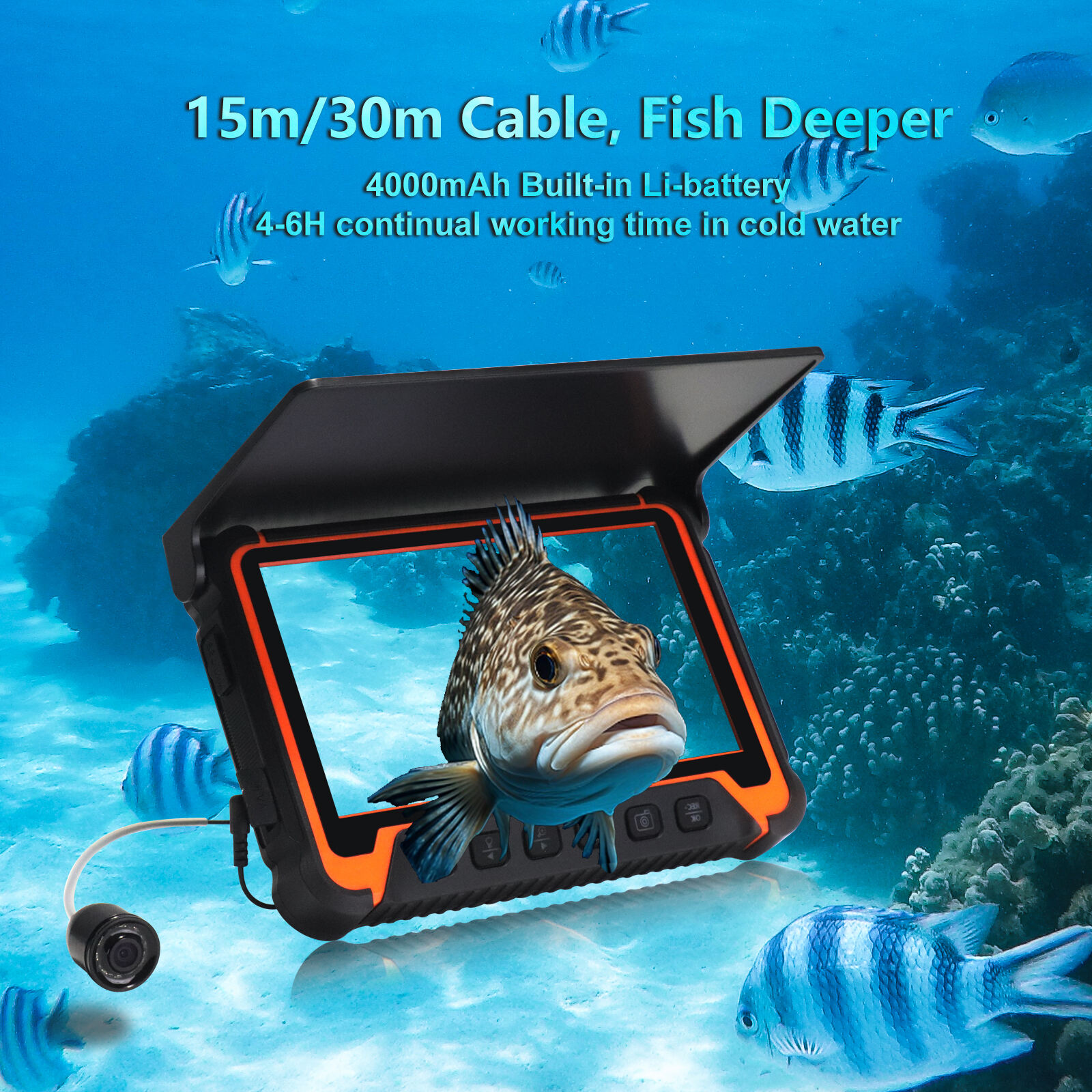How Underwater Fish Finders Revolutionize Modern Fishing
The Core Science: Sonar Technology Explained

Sonar tech, which stands for Sound Navigation and Ranging, has changed fishing forever by bouncing sound waves around underwater to find stuff down there. Fishermen get all sorts of useful info about where the fish are hanging out and how deep they're swimming. What started as something for the military back in the day has evolved into gear that makes weekend anglers catch way more fish than before. Let me break it down simply. The device sends out these sound waves that go through the water until they hit something like a school of bass or a rock formation. When they bounce back, the unit reads what it sees and creates images on screen almost instantly. There are two main types too. Active sonar shoots out its own signals to track fish movement, while passive versions just listen for noises made by fish themselves. Some folks swear by passive systems when they want to sneak up on wary fish without alerting them first.
From Flashers to Live Imaging: Key Evolution Milestones
Sonar tech for fishing has come a long way over the years, with some pretty interesting developments along the road. Back in the day, those old school flasher units gave fishermen nothing but simple circular displays showing depth and maybe a hint at fish presence below, but not much else in terms of detail. Then came the 2D imaging systems which changed everything for anglers wanting to see what was actually happening under the water surface. These newer systems let folks spot structures, schools of fish, and even individual bites with far more clarity than before. As manufacturers kept pushing boundaries, we saw DownScan and Side Imaging hit the market, giving fishermen incredible detail down to rocks and vegetation on the lake bed. Now there's this cool forward facing live sonar stuff that shows exactly where fish are moving in real time, making it possible to adjust tactics on the fly based on what's going on beneath the boat. Looking ahead, most experts think these imaging systems will get even better integrated with smartphones and tablets, possibly incorporating AI features that analyze patterns and suggest optimal fishing spots automatically.
Explore the benefits of cutting-edge sonar technology by checking out the Fish Finder for Boats. Whether you're adapting to evolving sonar trends or seeking a more informed fishing experience, these advancements in underwater imaging are paving the way for smarter, more efficient fishing.
HD Imaging Technologies Every Angler Should Know
Traditional 2D vs DownScan Imaging

Most fishermen still rely on old school 2D imaging because it's straightforward and gets the job done. The system works with sonar tech to show where fish are hanging out at different depths in the water. What makes 2D so popular is how easy it is to read and interpret when scanning through the water column looking for bites. Now contrast that with DownScan imaging which takes things to another level entirely. This newer tech gives much clearer pictures of what's actually down there beneath the surface. Anglers can see detailed outlines of rocks, weeds, and other structures where fish tend to hide. The extra detail helps spot potential hotspots that would be impossible to detect with basic 2D systems.
Looking at how different technologies work shows that regular 2D imaging gets the job done for finding fish in general situations, but DownScan imaging really shines when it comes to seeing what's going on below the surface. Many seasoned anglers report better results after switching to DownScan systems, with some saying they catch significantly more fish since making the change. Research backs this up too, with data indicating around a 30% improvement in catch rates for those using DownScan technology. As fishing equipment continues evolving, these detailed images are becoming essential tools for anyone serious about improving their success rate on the water.
Side Imaging: Covering Wider Areas
Side Imaging tech has completely changed how fishermen approach their sport, letting them see much more of what's happening under the water than ever before. The system sends out powerful sonar signals to both sides of the boat, basically creating a giant window into the underwater world as it moves along. For anyone fishing large areas where visibility is limited, this stuff is a game changer. With Side Imaging, anglers can spot rock piles, submerged logs, and other structures where fish tend to hang out, things that regular sonar just doesn't show well. Most folks who switch to Side Imaging notice they catch more fish because they're actually seeing where the action is happening instead of guessing based on old-school methods.
Anglers who win tournaments and use Side Imaging tech tend to catch way more fish than before they started using it. Most say the real game changer is how this tech helps find those hard to spot fish hiding spots underwater. Take Humminbird for instance, they've been around forever in the fishing world and their Side Imaging has some pretty cool features that many pros swear by. Then there's Lowrance which also dominates the market but approaches things differently with their own special functions that attract different types of anglers. Both companies keep innovating, which explains why so many competitive fishermen stick with either brand when heading out on the water.
Forward-Facing Live Sonar: Real-Time Advantage
The new forward facing live sonar tech is changing fishing forever because it shows exactly where fish are moving right now. Fishermen no longer have to guess what's happening underwater since they get instant updates about fish activity patterns. When someone sees a school of bass suddenly scatter, they can switch tactics within seconds instead of waiting for results. Most anglers report catching way more fish after switching to this system. Some even say they've caught species they never targeted before simply because the sonar revealed hidden hotspots just below the surface.
Many pro anglers swear by forward facing live sonar, calling it nothing short of revolutionary. They tell stories about being able to cast right where they wanted to go and watch those fish react to their bait in real time. What's next for this tech? Experts think we'll see better picture quality soon enough. Some are even talking about combining sonar with augmented reality stuff, which would basically let fishermen see through the water like magic glasses. This kind of upgrade could totally change how people fish, giving them images so clear and detailed that they almost feel like they're underwater themselves. The whole experience gets way more exciting when you can actually see what's happening beneath the surface instead of just guessing.
Locating Fish with Precision
Fish finders underwater really help locate fish accurately, which cuts down on wasted time looking around and makes actual fishing much better. Some research indicates that people who use sonar tech actually catch way more fish than those without it, sometimes as much as 40 percent more according to reports from folks out on the water. The precise readings let fishermen figure out what kind of fish they're dealing with based on where they hang out at certain depths and what kind of environment suits them best. Plus this tech helps keep fishing sustainable too. When anglers know exactly where to cast, they don't end up disturbing all sorts of marine creatures unnecessarily. Less disruption means healthier ecosystems overall and helps protect our oceans for future generations.
Identifying Underwater Structures and Bathymetry
Getting to know what's going on under the water makes all the difference when it comes to catching fish successfully. Reefs, drop-offs, and places where plants grow underwater tend to draw in lots of fish. Modern fish finders really help map out how deep the water is locally, showing those underwater hills and valleys that matter so much for planning where to cast your line. Anglers who learn to spot these prime spots where fish gather around structures typically see better results at the end of the day. Whether someone fishes just for fun or does it professionally, knowing this stuff helps them plan better trips. Technology gives us tools to see beneath the surface, making it easier to figure out what's happening below the waves without having to guess all the time.
Efficiency Boost: Less Guesswork, More Action
Using underwater fish finders really cuts down on wasted time for anglers who no longer need to spend hours guessing where the fish might be hiding. Instead of wasting precious daylight searching aimlessly, fishermen get to actually cast their lines and catch something worthwhile. The peace of mind comes through too when there's less second-guessing involved, which makes those long days on the lake feel rewarding rather than frustrating. Most folks who've tried them stick with fish finders after seeing results. One recent survey showed around 8 out of 10 users wouldn't go back to old school methods once they experienced what modern technology offers. Combine what these gadgets tell us with what we already know about local waters, and suddenly our fishing strategies become much more targeted and effective than before.
Choosing Your Ideal Fish Finder Setup
Matching Technology to Your Fishing Style

Picking out the best underwater fish finder starts by thinking about what kind of fishing someone actually does most of the time. Are they casting for bass in local ponds? Going after big game in the ocean depths? Or maybe just enjoying quiet days on calm lakes? The tech that works well varies quite a bit between these scenarios. Bass hunters typically want something good at showing details in shallow waters, whereas folks chasing tuna or marlin need equipment that can handle much deeper readings. What matters most is finding gear that fits how people actually spend their time on the water. Many experienced anglers will tell stories about how getting the right setup made all the difference in catching more fish and having better overall experiences. When shopping around, look at things like how easy the device is to move around, how deep it can go, and whether someone feels comfortable using it without getting frustrated.
Essential Features for Freshwater vs Saltwater
Picking out a fish finder means knowing what works best in different waters. Freshwater units usually need good sensitivity to see through muddy conditions, while saltwater versions should stand up to harsher conditions without rusting away. Water conditions matter a lot too since fish react differently based on how salty the water is, how deep they're swimming, and whether the water is clear or not. Most anglers will tell you their gear performs better when matched properly to where they fish. Experts regularly warn about problems that happen when folks grab any old unit without checking if it fits their specific needs. Getting the right kind of finder for the job at hand makes all the difference in catching more fish and keeping equipment working longer without breakdowns.
Budget Considerations Under $800
People often think good fish finders come with huge price tags, but that just isn't true anymore. There are plenty of solid options below eight hundred bucks that pack serious punch despite their lower cost. For folks watching their wallets, focusing on key features matters most. Look for units with decent screen clarity, accurate depth readings, and intuitive controls so they don't become frustrating rather than helpful. Brands like Lowrance and Garmin have models in this range that consistently get great reviews from actual users who spend time on the water. Spending a bit more upfront usually pays off down the road compared to those cheap knockoffs that stop working after a few trips out. Smart shopping means finding that sweet spot between what works well and what fits comfortably within our fishing budgets.
Table of Contents
- How Underwater Fish Finders Revolutionize Modern Fishing
- The Core Science: Sonar Technology Explained
- From Flashers to Live Imaging: Key Evolution Milestones
- HD Imaging Technologies Every Angler Should Know
- Locating Fish with Precision
- Identifying Underwater Structures and Bathymetry
- Efficiency Boost: Less Guesswork, More Action
- Choosing Your Ideal Fish Finder Setup


